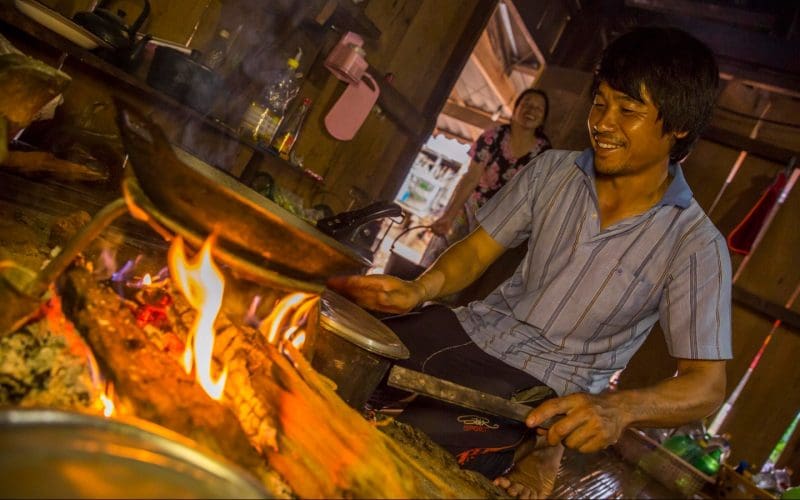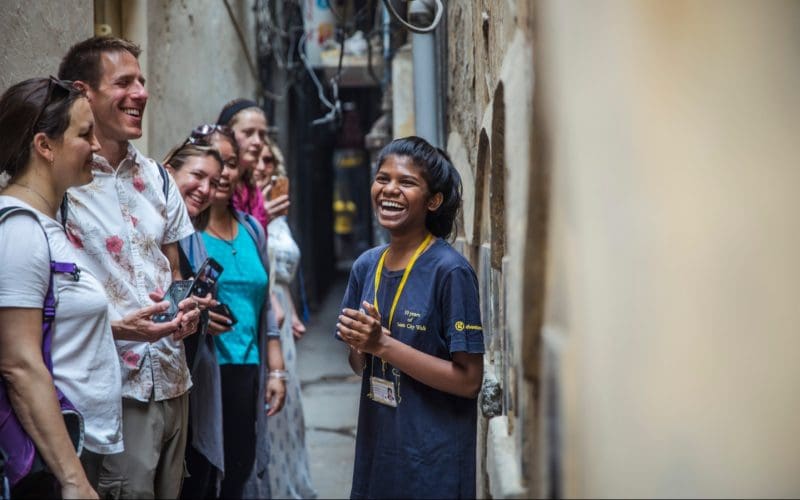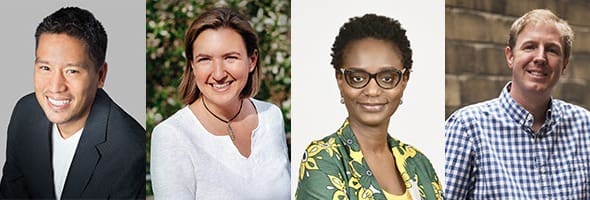Community tourism can help drive the recovery of the travel industry
By: Ann Ruppenstein
Judy Kepher Gona, director of the Sustainable Travel & Tourism Agenda in Nairobi, Kenya, can easily put into perspective the difference between a charitable donation and the kind of compassion that is developed through community tourism.
“I always say that charity is good, charity has its place, but it’s less transformative. Charity gives more pride and value to the giver than it transforms or reaches the heart of the recipient,” Kepher Gona said during the latest Retravel Live virtual event focusing on The Power of Community Tourism. “There is a lot of charity that goes on that doesn’t benefit communities because it satisfies the person giving, the person takes the pride with it, like this is what I did, and there is little thought about the longterm impacts of that giving.”
Picture for example a school in a rural village in Africa. While someone may see that the walls of a classroom aren’t clean and offer a charitable donation to paint it, without a deeper understanding and connection they are missing the point that the children learning there don’t have pens or books.
“That is how charity works, the paint looks good and it is easy for immediate gratification. You can take a picture of a wall that has been painted and you identify with it, but it takes a long time and engagement with a community to transform the children who don’t have the pens and need books to see the results and report on the impact,” she said. “So the box of charity is very attractive — because of the things I have just said — immediate gratification of the person who does it, without much thought to the longterm impact and whether you are creating any difference at all.”
Whereas compassion, she said, is a longterm investment with emotional engagement and pushes people to ask more questions like what will people in the community truly benefit from.

For Jamie Sweeting, president of Planeterra, a key part of community tourism comes down to ownership.
“I think it’s about the community running, owning and leading the experiences themselves and essentially hosting guests,” he said. “It’s about tourism as a vehicle to improve livelihoods of the host community.”
Audrey Scott, co-founder, Uncornered Market, is a big advocate for the social enterprise model of community tourism.
“This is a model of tourism where there is shared value and shared benefit. First it has to come from the community, in terms of the type of tourism they want to share, they want to develop, the type of travellers they want, and working with them to help create these experiences that really provide a connection. A connection between travellers and the communities, to the people, to the place, to the history, to the architecture, to the food,” Scott says. “But then also for the communities, this understanding that there’s also connection to the travellers. A lot of local people do love connecting and meeting travellers because that also enriches their lives. But then the social enterprise of the community tourism aspect is so important because that money and that benefit is also going back to the community.”
In social enterprises, the money earned from tourism also goes back to support other community initiatives and projects that are identified as important and necessary by the community.
Meanwhile, Bruce Poon Tip, founder of G Adventures, says community tourism is also about bringing their travellers to communities that wouldn’t normally benefit from travellers.
“Everyone wants to go to Peru and they want to go to Machu Picchu or they want to go to Africa and they want to see Maasai Mara but we wanted to take people off those tracks and into communities that offer rich experiences for people in a cultural exchange way but also offered a community experience where people would benefit from tourism that normally wouldn’t benefit because they are not on the track of tourism. At G Adventures we often talk about wealth distribution, poverty alleviation and how travel can be a vehicle to alleviate poverty.”

And while the community is key to developing this kind of tourism, Sweeting points out that a lot of the power comes down to the individual travellers too.
“Ultimately, it’s the traveller who is deciding where they want to spend their discretionary income to go on a trip and how they want to travel and where they want that money to go,” he notes. “I think that not enough travellers fully recognize the power that they have, that power of the wallet, they can influence travel companies to be the ones that are integrating meaningful community tourism experiences into their itineraries and into their product offering.”
Sweeting also feels travel companies need to step up as well in terms of engaging with these local communities and building these experiences into their itineraries.
“It’s a partnership, it’s a vehicle of exchange, of trade not aid, really it’s about empowerment on both sides, but ultimately the reason I’m so passionate about this, having been doing it for 26 years, is it’s just a better experience for the traveller. It’s absolutely a better experience for the community, and if the community is winning and the traveller is winning, then the travel companies themselves are going to win too.”
When it comes to the benefits of community tourism, Scott says it’s not just economic but also about cultural exchange, perseveration and environmental conservation. It also provides a meaningful connection that travellers take back home with them.
“In terms of the connection to people, when travellers go to a place, they share a meal, they stay in a home perhaps, there is such a strong connection to the people there, to the culture, to the place, and that care grows. You have this care about the place and you take that back home with you,” she said. “And for the local communities also when travellers visit, it also provides a continual source of income, a source of exchange, a source of connection. That it’s not just a one time thing or not just every now and then, it’s growing and building and when it’s done by the community, meaning they are deciding how they want their tourism to develop, then it’s done in a way that the community also decides what they want to share, and it also develops a lot of pride in terms of their local culture.”
Similarly, Kepher Gona views community tourism as a way of redistributing wealth to communities that other wise wouldn’t benefit from tourism that goes to mainstream destinations.
“When you go to a community and sit under the trees with them, next to their houses with them, and share their meals with them, it’s a very different real setting,” she said. “I believe community tourism can create wealth for communities not just directly from tourism revenue but also through travellers’ philanthropy, which is a very powerful tool for connecting with communities.”

Looking to the future
Prior to the pandemic, over tourism was a big issue within the industry. As travel resumes, Scott stresses the importance of working with local communities to discuss what kind of tourism they want to highlight as well as cautioning them on the pitfalls of having too many tourists.
“We’ve done a lot of work in remote rural areas, and it’s understanding what the community want and also explaining what some of the implications are of having more visitors. Sometimes people are like ‘oh, the more the merrier’ but we all know there are impacts on those local communities,” she said. “It also comes down to local communities understanding the impacts of when there are too many travellers and potentially putting in some restrictions in terms of how many people can visit certain natural areas because if they are fragile, they can be destroyed.”
Scott said travel companies should also be educating travellers about the impact they have and trying to reduce their footprint as much as possible.
“It’s tough because a lot of communities are hoping to get travellers back, and I think it’s hard to figure out what is that fine line where there’s enough travellers to support the local businesses and allow for growth, but also don’t hurt the environment and overwhelm the local community that is there.”
With travel to its communities halted — Sweeting said Planeterra focused on providing 30 emergency grants for its projects around the world, which now span 120 projects across 60 countries.
“The majority of the work that we’ve been doing with communities has been about enabling them to see who they want to be when this comes out and when travel starts up again,” he said. “A lot of them have come to realize that they’ve been a bit too reliant on tourism and they want to have a more equitable share in how their economy works”
As travel opens up, he said it should be the community’s decision to decide when and how they would like travellers to return.
“Our job as NGOs, travel companies, consultants and experts, is to make sure that we’re providing communities with the resources to make informed decisions about what is right for them as communities,” he said.

















